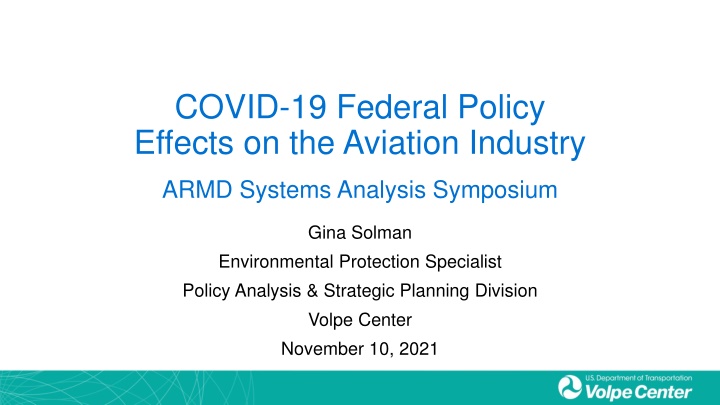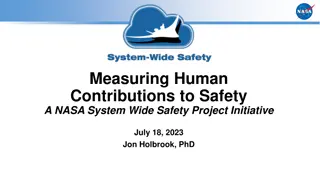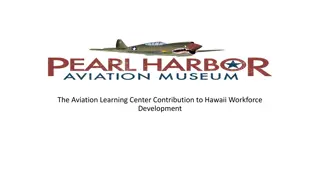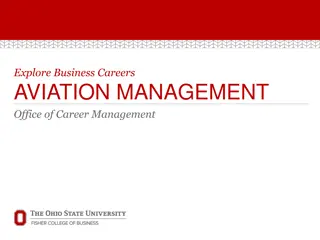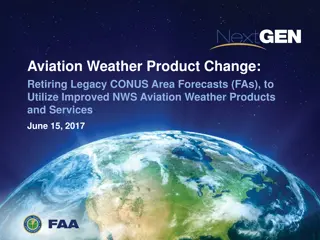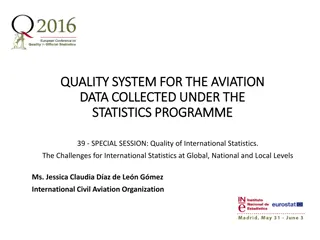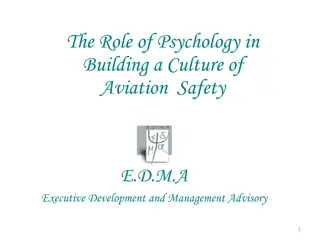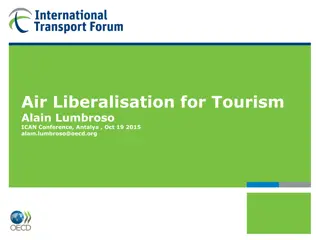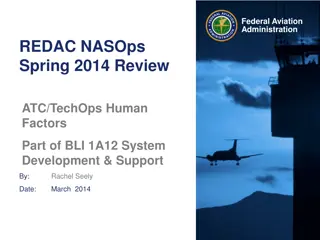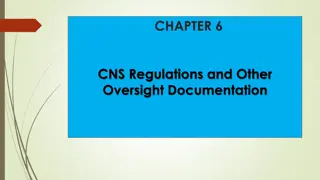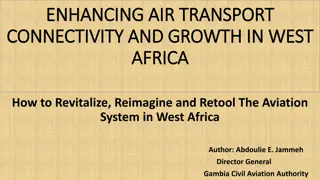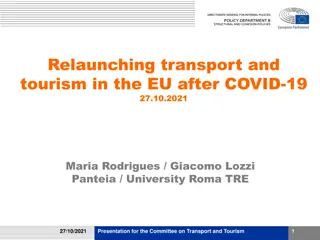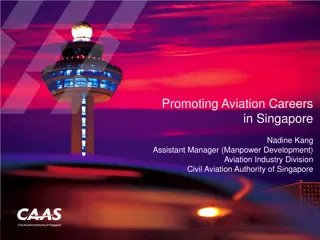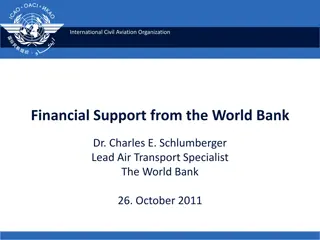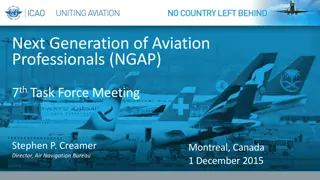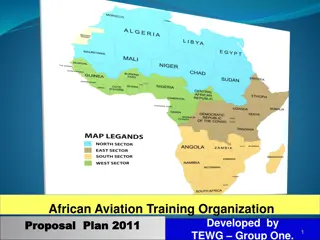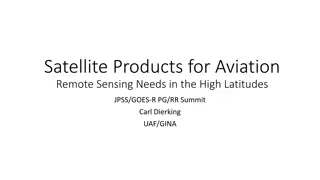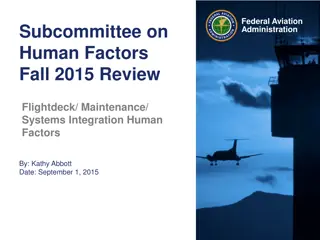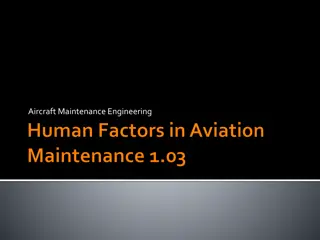Impact of Federal Policies on the Aviation Industry During COVID-19
Analysis of COVID-19 policy effects on the aviation industry, including passenger demand changes, regulatory flexibilities, financial support provided, and implications of various governmental actions. Data presented includes shifts in passenger and freight traffic, regulatory actions by the FAA, and the substantial financial aid allocated to the aviation sector during the pandemic.
Download Presentation

Please find below an Image/Link to download the presentation.
The content on the website is provided AS IS for your information and personal use only. It may not be sold, licensed, or shared on other websites without obtaining consent from the author.If you encounter any issues during the download, it is possible that the publisher has removed the file from their server.
You are allowed to download the files provided on this website for personal or commercial use, subject to the condition that they are used lawfully. All files are the property of their respective owners.
The content on the website is provided AS IS for your information and personal use only. It may not be sold, licensed, or shared on other websites without obtaining consent from the author.
E N D
Presentation Transcript
COVID-19 Federal Policy Effects on the Aviation Industry ARMD Systems Analysis Symposium Gina Solman Environmental Protection Specialist Policy Analysis & Strategic Planning Division Volpe Center November 10, 2021
Background and Introduction Literature review and policy analysis of U.S. Government actions that affected the aviation industry during the COVID-19 pandemic Part of the Volpe Center s COVID-19 Impact Study in support of NASA s Aeronautics Research Mission Directorate Types of policies covered: Restrictions on passenger air travel Regulatory flexibilities to support industry and supply chain resilience Financial support 2
Change in Passenger Demand and Capacity 2020 DEMAND Revenue Passenger Kilometers (RPK) change from 2019 CAPACITY Available Seat Kilometers (ASK) change from 2019 Passenger Load Factor (PLF) change from 2019 Passenger Load Factor (PLF Level) CALENDAR YEAR Total Market North America Total North America International U.S. Domestic -65.90% -65.20% -56.50% -50.20% -17.80% -25.60% 64.80% 59.20% -75.40% -65.50% -23.90% 60.10% -59.60% -41.40% -26.40% 58.80% Source: IATA 3
Passenger air travel Policies that limited supply Presidential proclamations to suspend or limit entry to the U.S. Policies that may have limited demand State-level stay-at-home orders CDC requirements o proof of negative COVID-19 test result or recovery o wearing mask on planes and other forms of transportation CDC risk-based recommendations for travel destinations 4
Regulatory Flexibilities FAA Actions Cargo transport exemptions Airport Slot Use Temporary Waivers Employee Reliefs 6
Financial Support to the Aviation Industry $121 billion total support to the aviation industry Payroll Support $32 billion 89% utilization 611 participants $16 billion 98% utilization 518 participants $15 billion 98% utilization 480 participants Grant Funding $10 billion 3,000 airports Loans & Loan Guarantees $46 billion allocated $38.3 billion sought (83%) $21.9 billion executed (57% of sought) CARES Act Consolidated Appropriations Act, 2021 $2 billion American Rescue Plan Act of 2021 7
Stipulations to Ensure Effective Policies Employee retention policies Targeted assistance Access to air transportation 8
Considerations for Future Policies Provide evaluation and support of new technologies, designs, and processes to make flying safer Contactless biometrics Automated sanitation of baggage, kiosks, bathrooms, water fountains, high use areas Testing and modeling of air flow, virus movement, and mask use onboard aircraft Invest in research and development to support competitiveness and sustainability of the aviation industry Attract and retain specialized workforce Target assistance to sectors that have the greatest need Ensure access to the national airspace system small community service Develop national aviation preparedness plan for communicable diseases 9
Key Takeaways Government intervention supported recovery Provided substantial financial assistance to maintain operations Adjusted to changes in demand for passenger vs. cargo Safeguarded specialized workforce Possible future work Expand assessment to other shocks Seek to understand impact of government intervention vs. industry actions 10
Q+A Session Project Manager: Seamus M. McGovern, Ph.D. Aviation Systems Engineering Division 617-494-2054 | seamus.mcgovern@dot.gov Presenter: Gina Solman Policy Analysis and Strategic Planning Division 617-494-3571 | gina.solman@dot.gov John A. Volpe National Transportation Systems Center United States Department of Transportation 55 Broadway | Cambridge Massachusetts 02142 www.volpe.dot.gov 11
